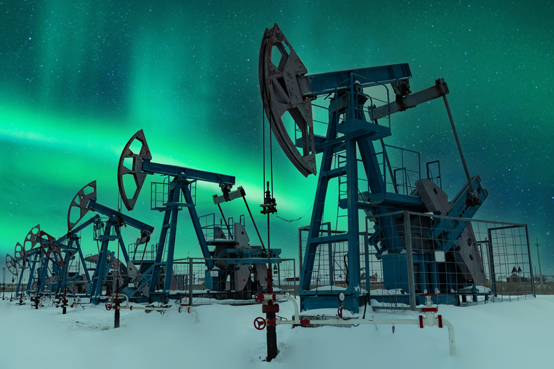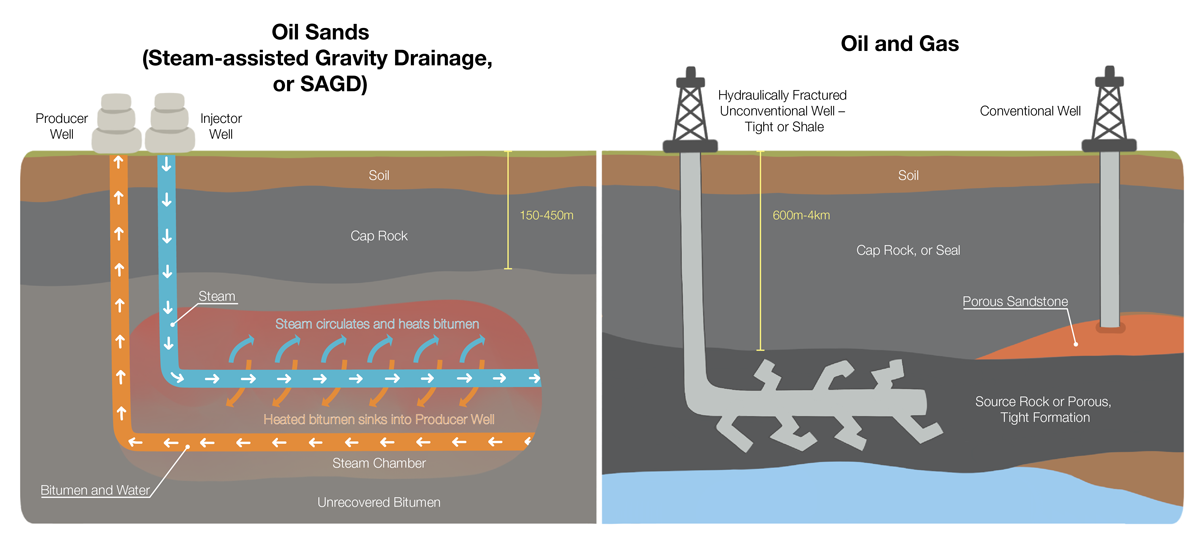Market Snapshot: Improved technology has led to higher production despite fewer wells drilled
Connect/Contact Us
Please send comments, questions, or suggestions for Market Snapshot topics to snapshots@cer-rec.gc.ca
Release date: 2021-05-05
The oil and natural gas industry in Canada and the United States (U.S.) has changed considerably over the past 20 years. Before 2009, producers almost always drilled vertical wells. Now, the large majority of wells are drilled horizontally.Footnote 1 Because these horizontal wells produce at higher rates than conventional vertical wells, production of oil and gas in Canada and the U.S. has increased despite a decreasing number of new wells drilled over the years.Footnote 2
Figure 1. Canada and U.S. Wells Drilled and Oil and Gas Production
Source and Description
Source: Well data: IHS Markit – Dynamic North America, Canada Newfoundland and Labrador Offshore Petroleum Board, and Alaska Division of Oil and Gas. Production data: CER, Alberta Energy Regulator, and Energy Information Administration
Description: This chart shows oil and gas production compared with vertical and horizontal wells drilled in Canada and the U.S. from 2001 to 2020. Prior to 2015, total wells drilled in North America averaged 52 000 per year. After 2015, wells drilled decreased to an average of 20 000 per year. Despite decreasing numbers of new wells being drilled, production of oil and gas in Canada and the U.S. increased over this period.
In the mid-2000s, producers discovered how to hydraulically fracture horizontal wells in multiple places, making them far more productive than vertical wells.Footnote 3 Technology used to fracture horizontal wells has continued to improve over the years, making new horizontal, fractured wells more productive than horizontal, fractured wells drilled in prior years.
Also by the mid-2000s, producers began to increasingly drill horizontal wells to produce bitumen in Canada’s oil sands.Footnote 4 “In-situ” bitumen is produced when steam is injected into the underground reservoir to heat the bitumen until the bitumen liquefies and flows. In-situ bitumen wells produce at relatively stable rates for over 20 years and do not have the same production declines that conventional and fractured wells experience.
Conventional vs. Horizontal Wells
Conventional and fractured wells tap into porous rock filled with oil and gas (for fractured wells, the “halo” of fractures surrounding the well helps tap this porosity). Once that well begins producing, pressure in the pool depletes, meaning the pool has less energy to push oil or gas into a well (like opening a balloon and letting the air flow out); thus, production rates decrease. Horizontal oil sands wells, on the other hand, rely less on reservoir pressure and can produce at the same rates for many years.
Description
This diagram has two panels. The first panel shows oil is produced from Canada’s Oil Sands using horizontal wells in what is called steam-assisted gravity drainage (or SAGD). One horizontal well injects steam into an underground oil sands reservoir, creating a “steam chamber”. The heated bitumen in the steam chamber then flows down into a second, underlying well, where the bitumen is then pumped to the surface. The second panel shows how oil and gas are produced using a vertical well and a hydraulically fractured horizontal well. The vertical well taps into a porous sandstone. The horizontal well taps into a source rock or porous, tight formation and is surrounded by a halo of fractures.
Since 2010, producers have also been increasingly drilling gas wells that produce condensate in Canada and the U.S., while also drilling oil wells in the U.S. that produce a significant amount of gas. This means that gas wells have been contributing more to oil production and oil wells have been contributing more to gas production in recent years.

Between 2003 and 2008, over 50 000 new, mostly vertical wells needed to be drilled every year to keep “barrels of oil equivalent”Footnote 5 (BOE) production relatively steady in Canada and the U.S. After 2008, as more horizontal wells were drilled, the total number of wells drilled every year in Canada and the U.S. significantly declined, yet production continued to grow. The number of wells drilled in 2019 was about one third of the number drilled in 2008, yet total production (BOE) was 75% higher. Notably, oil and gas production fell in 2020, in part because so few wells were drilled because of very low oil prices, but also because producers shut in some oil production.Footnote 6
The greater use of in-situ production in Canada partially explains why Canadian oil production fell only a small amount during 2020 despite record low well counts: once shut-in in-situ production came back online as prices rose, it returned to previous production levels and did not decline thereafter like production did from conventional and fractured wells.
These trends of using horizontal drilling continue in the CER’s Canada’s Energy Future: Energy Supply and Demand Projections to 2050 long-term oil and gas production scenarios. In the Evolving Scenario, the share of oil sands in-situ production grows over the projection period, from 31% in 2019 to 43% in 2050. Likewise, natural gas production is dominated by horizontal drilling of tight gas resources such as the Montney Formation and Alberta’s Deep Basin.
- Date modified:

